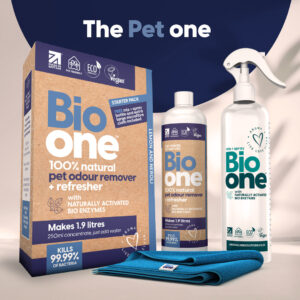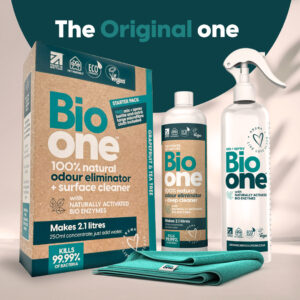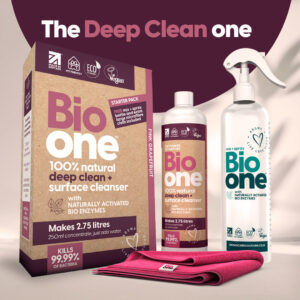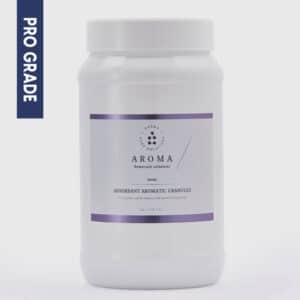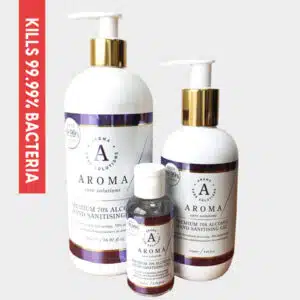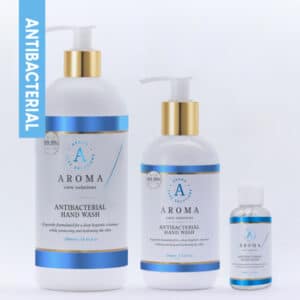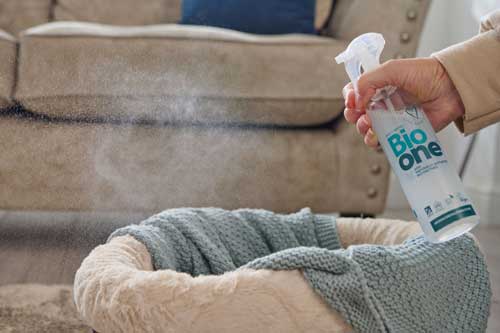Hamsters are pretty adorable. From your classic golden Syrian hamster to dinky dwarf breeds like the Winter white, kids absolutely love these pocket-sized pets. Hamsters might look sweet but sometimes their homes smell anything but.
Pee and poo are the usual culprits, and they can leave stubborn marks and lasting odours. Here’s the best way get rid of those stains, how to use an enzyme cleaner like Bio one™ and general tips for cleaning your hamster’s cage.
How do you get pee stains out of a hamster cage?
A fresh urine stain on the hard surfaces of your hamster’s cage shouldn’t be too tricky to wipe away with a standard cleaner or even soap and hot water. Disinfecting becomes more difficult when the urine soaks into soft furnishings or dries, hardens, crystallises and develops on plastics – leaving a white, crusty stain. To remove these stubborn marks on hard or soft areas, you should use an enzymatic cleaner. This is because the enzymes get deep down into the surface to eliminate residual waste, bacteria and odour. You also need to regularly clean the cage and wipe away urine to make sure it doesn’t have a chance to soak into fabrics or dry.
What can I use to clean my hamster cage?
Bio one™ can be used as a pet stain and odour remover because it’s safe and free from chemicals. It disinfects it by removing 99% of bacteria, using only organic enzymes. It also contains natural oils which leave the affected area smelling sweet after you’ve cleaned it. Plus, the product is kind to the planet, vegan and it can be used to remove marks on all surfaces and fabrics.
How to get pee stains out of a hamster cage with Bio one
- Locate the urine stain.
- Wipe away any fresh wee or debris from the area.
- Spray the stain thoroughly with Bio one™ until it’s totally saturated.
- The enzymes and friendly bacteria in Bio one™ work when the affected area is damp, so leave it to soak for five to ten minutes.
- After five to ten minutes, remove excess with a cloth or paper towel. If the stain and any smells have lifted, leave it to dry or respray the area and leave it for an extra five minutes.
- Finally, remove excess product, leave to dry and enjoy the fresh scent.
Why is a hamster’s cage smelly?
Hamsters are creatures of habit. Unless they move their nest, these cute rodents tend to pee in a corner of their cage, usually in exactly the same spot. Although they will try to wee on their bedding, like shredded paper or pellets, repeated peeing in the same area will often leave a white stain underneath. The urine which builds up has a distinctive ammonia odour, which makes the cage smell. Unlike hamster pee, the droppings are usually dry and odourless plus they do them all over the place so they’re less likely to build up and create stubborn marks. Pungent pongs might also be from food they’ve stashed and left for a long time. Remove any food waste when cleaning but always replace their stash with a tasty morsel.
How often should you clean a hamster cage?
A weekly cleaning schedule is probably your best bet. If you have just one hamster, you may be able to do it fortnightly but if you have several or a smaller cage, you might need to do it more than once a week. The weekly clean should be thorough, where you remove and clean all toys or furniture and wipe down every surface. In between this deep clean, you need to remove and refresh their bedding every day, giving them fresh food and water too.
Where should you put your hamster when cleaning?
Removing your hamster from their cage, tidying and reorganising their bedroom can be stressful for these dinky critters. Pop them in a safe place that they’re familiar with like a pet carrier or a hamster ball. If you go for the exercise ball, remember that you can’t leave them in a small space for too long as they need fresh air and water so try and finish tidying in under half an hour. If cleaning will take a while, their travel cage is bigger plus you can add bedding and toys to keep them comfy and distracted.
What are enzymes?
Don’t be fooled to think that because enzymes are natural they are less effective than chemical cleaners. Enzymes are nature’s very own powerful cleaning tools. Making them the go to choice for pet owners who do not want to spray harmful chemicals around their pets and their home.
Simply put, enzymes are all around us performing millions of important tasks in our bodies and in nature every single day. They are a type of protein that act like a biological catalyst to speed up the break down of organic compounds.
Similarly to how saliva, (which contains enzymes), initiates the digestion process by breaking down food in our mouths, cleaning enzymes use the same ‘enzymatic digestion’ to effectively break down and eradicate the organic proteins present in urine, faeces, vomit, drool, dirt, food, and more.
This process not only makes cleaning easier but also prevents the growth of bad bacteria – the root cause of those unpleasant odours – in the air, on surfaces, and within the fibres of your soft furnishings.
Try out Bio one™ today, vomit and the other nasties is what nature created enzymes for.
Live Love Clean
-
Sale!
Bio One Odour Remover and Surface Cleaner Starter Pack – 250ml Concentrate
Original price was: £25.95.£18.95Current price is: £18.95. — or subscribe to save up to 10% Add to basket -
Sale!
Bio One Pet Odour Remover Starter Pack- 250ml Concentrate
Original price was: £25.95.£18.95Current price is: £18.95. — or subscribe to save up to 10% Add to basket -
Sale!
Bio One Baby Odour Remover Starter Pack – 250ml Concentrate
Original price was: £25.95.£18.95Current price is: £18.95. — or subscribe to save up to 10% Add to basket -
Sale!
Bio One Deep Clean & Surface Cleanser Starter Pack- 250 ml Concentrate
Original price was: £25.95.£18.95Current price is: £18.95. — or Original price was: £18.95.£17.06Current price is: £17.06. / month Add to basket
-
Sale!
Alcohol-free Hand Sanitiser Saver Bundles
£10.00 £15.00Price range: £10.00 through £15.00 Select options This product has multiple variants. The options may be chosen on the product page -
Absorbant Aromatic Granules – 1kg
£16.99 Add to basket -
Sale!
Premium 70% Alcohol Hand Sanitising Gel
£1.66 £6.66Price range: £1.66 through £6.66 Select options This product has multiple variants. The options may be chosen on the product page -
Sale!
Luxury antibacterial Hand Wash with added moisturisers
£2.15 £5.83Price range: £2.15 through £5.83 Select options This product has multiple variants. The options may be chosen on the product page


